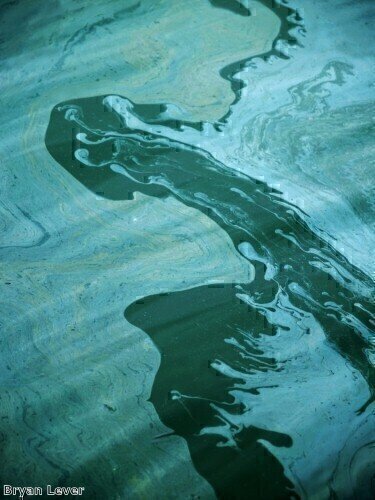-
 An oil-like sheen has been found on the groundwater table in north Chennai
An oil-like sheen has been found on the groundwater table in north Chennai
Fuel for Thought
North Chennai oil clean up 'not effective'
Jan 08 2014
Although clean-up of an oil leak in north Chennai, India, has been ongoing, a new report has found that little difference has been made to the regions drinking water. IIT-Madras carried out a detailed environmental assessment of the area after the Bharat Petroleum Corporation Limited (BPCL) started clean-up efforts.
Some 947 barrels of oil-water have so far been pumped out of Tondiarpet since since July 2013 but the volume of oil in the drinking water has not been significantly reduced, reports the Times of India. The environmental assessment follows on from complaints regarding borewell water contamination in Varadaraja Perumal Koil Street.
According to a final draft of IIT-Madras' report, which was submitted to the National Green Tribunal on Monday January 6th, a substantial amount of non-soluble oil is still floating on top of the groundwater table. It was also found that a large amount of oil is trapped in the soil around the groundwater table, both below and above the saturated and unsaturated layers.
While the contamination itself is within one area, it has been allowed to spread by residents extracting groundwater through bore holes, posing further health and environmental risks. The report states that around 23 parts-per-million (ppm) of benzene and 108 ppm of toluene - a possible neurotoxin - are present in the groundwater. IIT-Madras has called for removal of the oil in the soil and treatment of the groundwater to reduce the contamination.
It has been suggested by some that are involved in the case that the continued spread of the oil pollution indicates that no major clean-up has been undertaken, despite claims by the agencies involved, reports the Times of India. Although the oil leak was first reported seven months ago the oil has been found in 18 new exploratory borewells.
The report found that the contaminated area measures at 9,500 square metres and has begun to spread to southern areas due to the continuous drawing of groundwater by residents. The soil contamination was found to begin at a depth of around 19ft below the surface but is shallower in areas that are underneath the damaged pipeline. It is possible that the clean-up process could take up to two years.
Digital Edition
PIN 25.1 Feb/March
March 2024
In This Edition Safety - The technology behind the ION Science Tiger XT - Safety with ammonia and LOHCs as hydrogen carriers Analytical Instrumentation - Discussion on new tribology te...
View all digital editions
Events
Apr 22 2024 Hannover, Germany
Apr 22 2024 Marrakech, Morroco
Apr 22 2024 Muscat, Oman
Apr 22 2024 Rotterdam, Netherlands
Apr 23 2024 Singapore

















